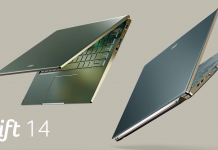Last updated on December 8th, 2022 at 02:37 pm
Performance is modest without AVX-512
A few days ago, Intel introduced the Ice Lake-SP generation Xeon Scalable processors for the Whitley platform.

So far, the results of Intel’s all-new 14-core processor raise a lot of questions. Ice Lake-SP’s first CPU passed a series of tests
These will be the company’s first 10nm server processors, and Intel claims its top 32-core model will be able to bypass AMD’s flagship 64-core Epyc in some applications.
Ice Lake-SP will be released early next year, but an engineering sample of a 14-core processor of this line has already appeared on the Web. The CPU is supposed to run at 2.0-4.0 GHz, but the test sample runs at a maximum of 2 GHz with all cores loaded.
But even in this form, it is quite good. In particular, in the CPU-Z test, the news hero scored 553.1 points in single-threaded mode and just over 10,000 points in multithreaded mode. In the first case, this is comparable to the Core i9-10900K with its impressive frequency of over 5 GHz, and in the second, Intel’s new product is approximately equal to the 16-core Ryzen 9 3950X.
However, it should be noted that the test version of CPU-Z actively uses the AVX-512 instructions. Without them, the new processor’s results are 371.6 and 6363 points, which is not at all impressive. Also, in the Fritz Chess test, the test sample with its 14 cores only slightly outperformed the Ryzen 7 1800X, although it is still worth keeping in mind the frequencies.




